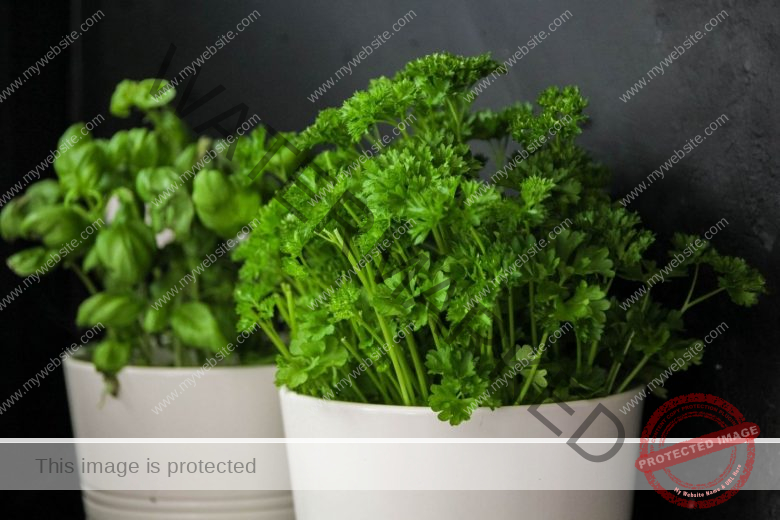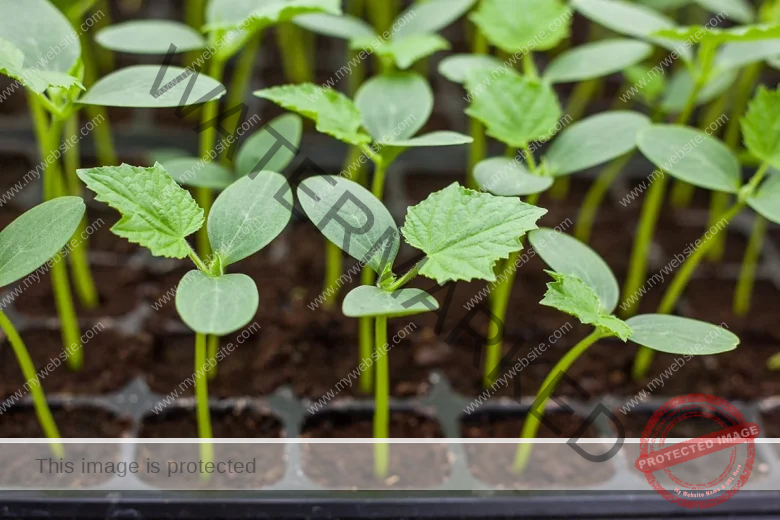You stand at the forefront of your small farm in Australia, ready to embark on a journey of agricultural success.
As you survey your land, a wealth of possibilities lies before you. In this bountiful country, knowing the most profitable crops for small farms is your key to financial prosperity.
With meticulous planning and dedication, you can harness the fertile soil and favorable climate to your advantage.
From luscious fruits like strawberries and blueberries to high-demand crops like avocados and garlic, the choices are abundant.
This introduction is your gateway to unlocking the secrets of Australia’s 15 most profitable crops, paving the way for a thriving and sustainable future.
15 Most Profitable Crops For Small Farms In Australia
To maximize profitability on small farms in Australia, prioritize the crops listed below.
- Avocados
- Garlic
- Blueberries
- Strawberries
- Almonds
- Macadamias
- Saffron
- Truffles
- Native Bush Foods
- Hops
- Finger Limes
- Baby Spinach
- Heirloom Tomatoes
- Medicinal Herbs
- Organic Vegetables
#1. Avocados
Avocados are highly sought after due to their nutritional value and culinary versatility. In Australia, the growing demand for avocados presents a profitable opportunity for small farms.
With the right climate and suitable soil conditions, avocado trees can thrive, providing a consistent yield of this creamy and nutritious fruit.
The popularity of avocados in both domestic and international markets ensures a steady income stream for small-scale farmers.
Read Also: 15 Fast Growing Trees In UK
#2. Garlic
Garlic is a staple ingredient in numerous cuisines and is known for its health benefits and culinary flavor.
Small farms in Australia can tap into the growing demand for garlic, especially for organic varieties.
Garlic cultivation requires relatively low inputs and can be grown in diverse climates.
With proper storage and marketing strategies, small-scale farmers can capitalize on the profitability of this aromatic crop.
Read Also: 12 Profitable Crops to Grow In Washington State
#3. Blueberries
Blueberries are a lucrative crop for small farms in Australia, as their popularity continues to rise due to their antioxidant properties and delicious taste.
The demand for blueberries is driven by both fresh consumption and processed products like jams, juices, and frozen berries.
Cultivating blueberries requires well-drained soil and a suitable chilling period, making certain regions in Australia ideal for their production.
#4. Strawberries
Strawberries are a profitable crop for small farms, offering a delightful treat to consumers.
The demand for fresh strawberries, especially during the peak season, presents an opportunity for small-scale farmers to capitalize on this popular fruit.
Strawberries can be grown in containers or in open fields, making them suitable for farms with limited space.
Read Also: 10 Profitable Farming in Zimbabwe
By employing proper cultivation techniques and effective marketing strategies, small-scale strawberry farmers can achieve significant profitability.
#5. Almonds
Almonds are highly valued for their nutritional content and versatility, making them a profitable crop for small farms in Australia.
With the right climate and soil conditions, almond trees can thrive, producing a reliable yield of these nutrient-rich nuts.
The increasing demand for almonds, both domestically and internationally, ensures a strong market for small-scale farmers.
Almonds can be harvested and sold as whole nuts or processed into various value-added products like almond butter or almond milk, further enhancing their profitability potential.
Read Also: 12 Profitable Crops In Pennsylvania
#6. Macadamias
Macadamias are native to Australia and are known for their rich, buttery flavor and nutritional benefits.
They have gained significant popularity worldwide, creating a profitable market for small farms in Australia. Macadamia trees thrive in regions with a subtropical climate and well-drained soil.
These trees require a few years to mature and bear fruit, but once established, they can yield high-value nuts.
The demand for macadamias, both as a snack and for use in various culinary applications, ensures a steady income for small-scale farmers.
#7. Saffron
Saffron, the world’s most expensive spice, presents an opportunity for small farms in Australia to achieve high profitability.
Saffron cultivation requires meticulous attention and manual labor, making it a labor-intensive but rewarding crop.
The ideal climate and well-drained soil in some regions of Australia provide suitable conditions for saffron production.
The scarcity and unique flavor of saffron make it a sought-after ingredient in the culinary and medicinal industries, creating a niche market for small-scale saffron farmers.
#8. Truffles
Truffles are a highly prized gourmet delicacy with a strong market demand, making them a profitable crop for small farms in Australia.
Truffle cultivation involves establishing symbiotic relationships between truffle-inoculated tree seedlings and the soil, requiring specific soil conditions and careful management.
With patience and expertise, small-scale truffle farmers can cultivate these elusive and aromatic fungi, catering to the high-end culinary market and reaping significant financial rewards.
#9. Native Bush Foods
Australia’s unique native bush foods, such as bush tomatoes, finger limes, and wattleseed, offer a profitable niche for small farms.
These indigenous crops have gained recognition for their unique flavors and cultural significance.
By cultivating and marketing native bush foods, small-scale farmers can tap into the growing demand for these ingredients in gourmet restaurants, specialty stores, and the tourism sector.
Sustainable harvesting practices and collaboration with Indigenous communities can further enhance the marketability and profitability of these crops.
#10. Hops
Hops, essential for beer production, present an opportunity for small farms in Australia to enter the thriving craft beer industry.
The increasing popularity of artisanal and craft beers has driven the demand for quality hops.
Cultivating hops requires specific climate conditions, including cool temperatures and adequate sunlight.
Small-scale hop farms can cater to local breweries or even establish their own microbrewery, leveraging the unique flavors and aromas of their homegrown hops to capture a niche market segment and achieve profitability.
#11. Finger Limes
Finger limes, also known as “citrus caviar,” are small, elongated citrus fruits with tangy juice-filled vesicles.
These unique fruits have gained popularity in gourmet cuisine and as garnishes for cocktails and desserts.
Small farms in Australia can tap into this niche market by cultivating finger limes. These fruits thrive in subtropical and tropical climates and require well-drained soil.
With their vibrant colors and burst of citrus flavor, finger limes offer small-scale farmers a profitable opportunity to cater to the high-end culinary market.
#12. Baby Spinach
Baby spinach is a versatile leafy green that is in high demand due to its nutritional value and culinary applications.
It is a profitable crop for small farms in Australia as it can be cultivated in both open fields and protected environments, allowing for year-round production.
Baby spinach is a popular ingredient in salads, smoothies, and cooked dishes, making it a staple in many households and restaurants.
By focusing on quality, freshness, and consistent supply, small-scale farmers can capitalize on the market demand for baby spinach.
#13. Heirloom Tomatoes
Heirloom tomatoes, prized for their unique flavors, colors, and textures, offer a profitable niche for small farms in Australia.
Unlike hybrid varieties, heirloom tomatoes are open-pollinated and have a rich history. They are sought after by consumers who appreciate their distinct taste and heritage.
Cultivating heirloom tomatoes requires attention to detail, as each variety has specific growing requirements.
Small-scale farmers can target farmers’ markets, specialty stores, and restaurants that value the exceptional quality and diversity of heirloom tomatoes.
#14. Medicinal Herbs
The demand for medicinal herbs is on the rise as people seek natural remedies and holistic wellness alternatives.
Small farms in Australia can capitalize on this trend by growing medicinal herbs such as lavender, chamomile, peppermint, and echinacea.
These herbs can be dried and processed for teas, essential oils, herbal supplements, and skincare products.
With proper cultivation practices and knowledge of the market, small-scale farmers can tap into the growing herbal medicine industry and establish a profitable business.
#15. Organic Vegetables
With the increasing awareness and demand for organic produce, small farms in Australia have a lucrative opportunity to cultivate and sell organic vegetables.
Organic farming practices prioritize environmental sustainability and the use of natural inputs.
By obtaining organic certification and focusing on high-quality, pesticide-free produce, small-scale farmers can cater to health-conscious consumers, local farmers’ markets, and organic food stores.
The premium prices associated with organic vegetables offer a favorable profit margin, making them an attractive choice for small farm profitability.
Cultivation Techniques of Profitable Crops for Small Farms in Australia
- Understand the crop’s specific growing requirements, including climate, soil type, and sunlight exposure.
- Implement proper soil preparation techniques, such as soil testing, nutrient supplementation, and organic matter incorporation.
- Use appropriate irrigation methods to ensure optimal water management for the crops.
- Practice effective weed, pest, and disease control measures, including crop rotation, companion planting, and organic pest management techniques.
- Monitor crop growth and implement timely harvesting practices to maximize yield and quality.
- Maintain good post-harvest handling practices, including proper storage, packaging, and transportation, to preserve crop quality.
Best Practices for Profitable Crops for Small Farms in Australia
- Conduct thorough market research to identify high-demand crops with good profit potential.
- Develop a well-thought-out business plan, including financial projections, marketing strategies, and production targets.
- Invest in quality seeds, seedlings, or planting materials from reputable sources.
- Adopt sustainable farming practices to protect the environment and optimize resource utilization.
- Embrace technological advancements and innovative farming techniques to improve productivity and efficiency.
- Establish strong relationships with buyers, local markets, and potential partners to enhance market access and secure stable sales channels.
Risk Management Strategies for Profitable Crops for Small Farms in Australia
- Diversify crop production to mitigate the impact of market fluctuations and unforeseen events.
- Purchase crop insurance or participate in government-supported risk management programs.
- Monitor weather patterns and implement suitable strategies, such as irrigation and protective structures, to mitigate climate-related risks.
- Maintain a contingency plan for pest outbreaks, diseases, or natural disasters by implementing proper pest and disease management practices and having emergency response protocols in place.
- Stay updated on market trends, consumer preferences, and changes in regulations to adapt farming practices accordingly.
- Engage in knowledge-sharing networks, attend workshops, and seek guidance from agricultural experts to stay informed about potential risks and their management.
Market Demand of Profitable Crops for Small Farms in Australia
- Conduct market research to identify crops with high demand in local, regional, and international markets.
- Explore direct marketing opportunities, such as farmers’ markets, community-supported agriculture (CSA), and online platforms.
- Develop relationships with wholesalers, distributors, and retailers to access broader market channels.
- Stay updated on consumer preferences, market trends, and emerging opportunities for value-added products.
- Seek niche markets and specialty retailers that value unique, organic, or locally grown produce.
- Utilize effective branding, packaging, and marketing strategies to differentiate products and attract target customers.
Factors for Successful Planting of Profitable Crops for Small Farms in Australia:
- Select crops suitable for the specific climate, soil type, and growing conditions of the farm location.
- Ensure access to reliable water sources or implement appropriate irrigation systems.
- Consider crop rotation and intercropping strategies to optimize nutrient uptake and minimize pest and disease pressures.
- Implement proper soil fertility management practices, including organic matter incorporation and balanced nutrient application.
- Monitor and adjust planting schedules to align with optimal growing seasons and market demand.
- Invest in appropriate infrastructure and equipment, such as greenhouses or shade structures, to create favorable growing environments.
Economic Significance of these Profitable Crops for Small Farms in Australia
- Profitable crops contribute to the financial viability and sustainability of small farms, providing a stable income stream.
- These crops support local and regional economies by creating employment opportunities, supporting agricultural industries, and stimulating downstream businesses.
- Export opportunities for profitable crops can enhance foreign trade and bring in foreign exchange earnings.
- The cultivation and sale of these crops contribute to agricultural diversification, reducing reliance on a single crop or sector.
- Profitable crops can help mitigate rural depopulation by providing economic incentives for farmers to remain in their communities.
- The economic significance of these crops extends beyond the farm gate, influencing the broader supply chain, food security, and the overall agricultural sector’s growth and resilience.
Best Crops for Beginning Farmers
- Leafy greens (e.g., lettuce, spinach)
- Herbs (e.g., basil, cilantro)
- Cherry tomatoes
- Zucchini and other summer squash
- Radishes
- Green beans
- Microgreens
Most Profitable Farming per Acre
- High-value specialty crops like saffron, truffles, and certain medicinal herbs
- Intensive vegetable production using vertical farming or hydroponics
- Cut flowers, especially unique and specialty varieties
- High-density orchard crops like almonds or macadamias
- Specialty mushrooms, such as gourmet or medicinal varieties
Best Crop To Grow On 5 Acres
The best crop to grow on 5 acres depends on various factors like climate, market demand, and personal preferences.
However, some crops that can be profitable on 5 acres include:
- Berries (e.g., blueberries, raspberries)
- Herbs and specialty spices
- Garlic
- Pumpkins and other winter squash
- Cut flowers
- Organic vegetables for direct market sales
Most Profitable Crops For Greenhouse
- Tomatoes, especially high-value heirloom or cherry varieties
- Cucumbers
- Peppers, both sweet and hot
- Herbs, especially fresh culinary herbs
- Microgreens and sprouts
- Salad greens and lettuces
- Specialty or exotic crops like baby ginger or edible flowers
High-Value Crops
- Saffron
- Truffles
- Ginseng
- Baby ginger
- Exotic mushrooms (e.g., oyster, shiitake)
- Edible flowers
- Culinary herbs like lavender, thyme, and rosemary
Which Farming Is Most Profitable
The profitability of farming depends on various factors, including location, market demand, farming practices, and the chosen crop or livestock. Specializing in high-value specialty crops, organic produce, or niche markets like gourmet or local food can often lead to higher profitability. Additionally, value-added products and direct sales through farmers’ markets or CSA programs can also increase profitability.
Least Labor-Intensive Crops
- Perennial crops like fruit trees or berry bushes, which require initial planting and periodic maintenance but have lower annual labor demands
- Specialty crops with minimal cultivation requirements, such as saffron or truffles
- Crops with efficient planting and harvesting techniques, like mechanical harvesting of grains or legumes
- High-tech farming methods like hydroponics or vertical farming, which can reduce labor-intensive tasks like weeding and soil preparation.
Conclusion
As you delve into the realm of small-scale farming in Australia, the knowledge of the 15 most profitable crops becomes your guiding light. With careful consideration, strategic planning, and unwavering dedication, you can cultivate a thriving agricultural business, reaping the rewards of your labor and securing a prosperous future for yourself and your farm. Embrace the opportunities that lie ahead and embark on a journey of agricultural success.






One Reply to “15 Most Profitable Crops for Small Farms in Australia”